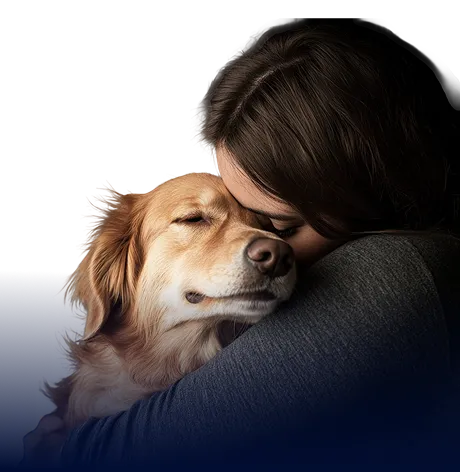For the Purrbabies


Dog fights can be scary, but knowing how to break one up safely is important.

As much as we love to dote on them and call them our fur babies, dogs are animals, and sometimes, animals get into fights with other animals. There doesn’t always have to be an apparent reason, nor does it inherently mean you or your pet are bad. But it's important to stay calm and know how to break up a fight should one arise.
Rushing into a dog fight without thinking through a plan can cause more physical harm to you or to the dogs in question. It matters that you take a moment to level your head and keep cool.
The absolute safest way to break up a dog fight—and ensure it stays broken up—is with two people. Ideally, each person will be physically fit enough to restrain a dog. Some dogs, like a Labrador Retriever can pull 50 to 100 lbs. That means that dogs are very powerful creatures and you have to be sure you can restrain them during the entire altercation.
From there, each person will then walk behind a dog and grab the dog’s back feet so they’re balancing on their front paws. Once you have them in this position, pull them apart.
Dog fights can occur if there is a perceived threat of territory or when dogs are trying to establish social hierarchy within their environment.
Dr. Dwight Alleyne
If you’re alone, grab a leash and loop it under the stomach of one of the dogs and back away, dragging one to a space where you can tie them up—either a fence or post. From there, grab the other dog's back legs and pull them away (making sure you move them in circles to prevent them from snapping at you). Ensure the dog is secured safely before returning to move the other dog attached to the fence or post.
Keep them balancing on their front pays as you back away from the other dog, but start moving in slow circles to ensure that they don’t curl back and bite you. This movement requires dogs to sidestep or fall, and it keeps them busy so they don’t think to bite you.
Dogs that have a longer body length, or are more agile can be more likely to curl around and bite due to their anatomy.
Dr. Dwight Alleyne
After breaking up the dogs, you need to ensure that they’re both secured away from one another. Do not let go of either dog at this point. If you do let go, they will likely charge back to and reengage with the other dog. Place both dogs away from each other in separate, safe spaces.
Since tensions are usually very high during these confrontations, both dogs should be placed in completely separate areas until they are able to calm down.
Dr. Dwight Alleyne
As we mentioned before, dogs are animals, and their instincts can kick in at any time and in any place. But, there are some things to be aware of when you take your dog out and among other people's pets.
It can sometimes be hard, but paying attention to a dog’s body language can tell you if they’re playing hard or actually fighting.
You should always be aware of your dog’s behavior and body language when around other dogs, and you should also be clocking what those other dogs are doing, too. More often than not, a dog fight with contact doesn’t start out of thin air. Usually, there are signs.
🚨In the middle of a fight, dogs aren’t very aware of their surroundings and will lash out and try to bite anyone and anything that gets in their way. It’s a survival method and doesn’t mean they don’t love you as an owner, but it does mean you need to be aware that attempting to break up a fight without knowing how to can result in you getting bitten.
Dog fights are scary. They can be loud and violent, and that can be difficult to comprehend, but panicking helps no one in this situation. Screaming and putting yourself in harm's way are just two ways to worsen an already bad situation. Take a moment. Take a breath and formulate your next move.
Prevention is key here, and there are several ways you can stay aware and vigilant to ensure that a dogfight never breaks out.
If two people are present (which is ideal!), each one should get behind a dog and grab them by their hind legs. Lift them so they’re balancing on their front legs and walk backward away from one another. To prevent them from biting you, move them around in a circle to ensure their jaws don’t turn to snap. Following this, move them into separate areas away from one another.
You can try a few different things like blowing an air horn or dousing the dogs with water. But our recommendation is to physically separate them if there are two adult humans available to do so.
Most of the time, yes. However, in some cases, rehoming or euthanization are better options to ensure the safety and well-being of the pets and owners. It’s always important to visit the vet after a serious dog fight to make sure injuries are minor and if necessary, discuss long term treatment options.








